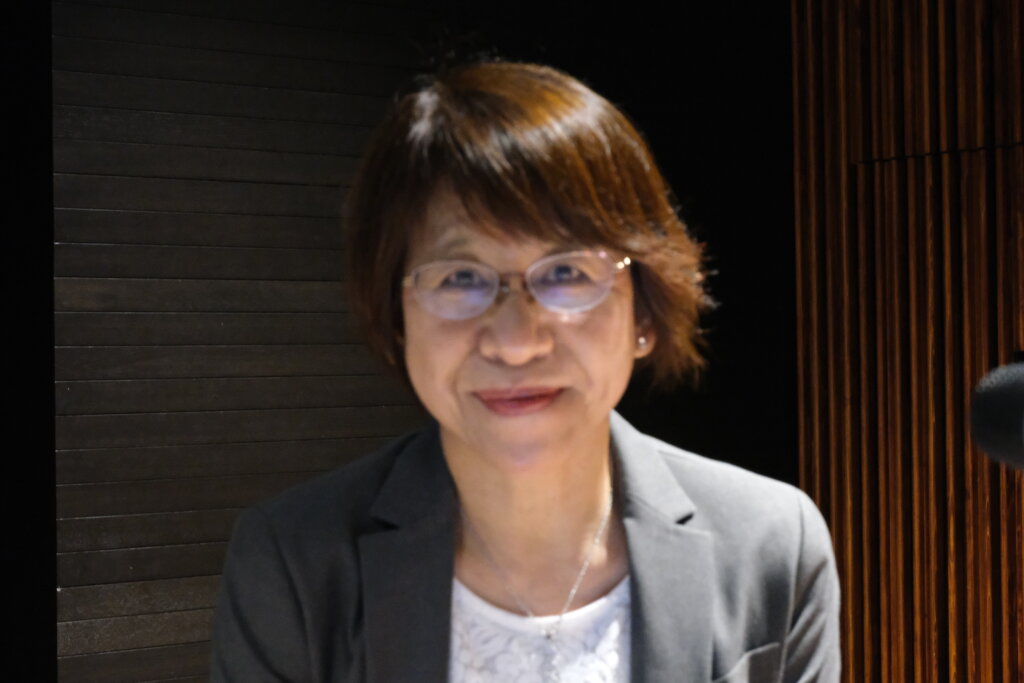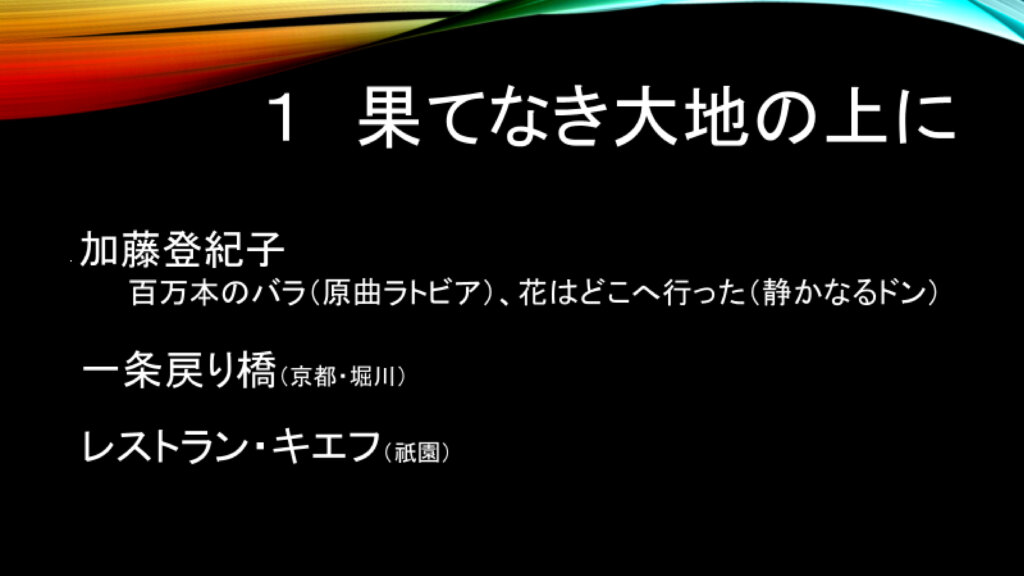Culture of Ukraine
The 2023 Cross-Cultural Awareness Workshop
Culture of Ukraine
Speaker: TOMONO Satoko and Prof. KURABAYASHI Kimio
Date&Time: February 19, 2023 14:00~16:00
Venue: Minato City Libra Hall
Co-sponsor: Minato City Board of Education
Following President Tanabe’s greetings, Mr. SATO Yoshiki, President of National Federation of UNESCO Associations in JAPAN (NFUAJ), the original proposer of this workshop, touched on the outline of the Federation’s support for Ukraine. With 97 people in attendance, \77,000 was raised during the workshop. The collected fund will be sent out to Ukraine via NFUAJ.


Part 1: World Heritage and Intangible Cultural Heritage (Speaker: TOMONO Satoko)

- The Ancient City of Taurica Peninsula and Its Chora
This area is home to the remains of ancient Greek colonial cities. Hundreds of chora (small rectangular zones) were discovered. - Kyiv: Saint-Sophia Cathedral and Related Monastic Buildings
Built by Yaroslav I in the 11th century, this is the most famous cathedral in the architectural history of Ukraine. Made up of 13 domes, it was destroyed by the invasion of Mongolians, but was renovated in the 18th century. The inside wall is covered with icons (pictures of saints).
Kyiv-Pechersk Lavra: This building is a legacy of religious austerity since 11th century. Once destroyed by the Nazis, it was renovated after Ukraine gained independence. - The Residence of Bukovinian and Dalmatian Metropolitans
Bukovinia was originally an area of beech forests, and it is along the border with Poland. In the 18th century, under Austrian Habsburg rule, the Metropolitan’s residence was reconstructed and designed by a Czech architect. Featuring a variety of styles, this is an architectural masterpiece of historicism, and currently making up part of a university. - The Struve Geodetic Arc
heStruve Arc is a chain of survey triangulations stretching from Norway to the Black Sea, Ukraine, through 265 points and over 2,820 km. This survey found the size of the earth, and that it is oval in shape, a great achievement of 19th century science and technology. (Tomono added some explanation on triangulation.) - L’viv- the Ensemble of the Historic Centre
The city is located near the Poland border, and lately attacked by Russia. Buildings of various architectural styles, such as Renaissance, Baroque and Eastern European style, have been ruled by Poland, Sweden, Russia, Austria, the Soviet Union, Nazi Germany and others. - The Historic Center of Odesa
Odesa was urgently designated as a World Heritage in Danger Site, without taking normal procedures through the World Heritage Committee. The designation was aimed at protecting the cultural assets of Odesa, by applying the article of the Hague Convention. Odesa was first built by the Ottoman Empire, and then became prosperous under the rule of the Russian Empire. There were a number of Jewish residents then. It is also famous for Battleship Potemkin. - The Ancient and Primeval Beech Forests of the Carpathian and Other Regions of Europe
After beech forests in Ukraine and Slovakia were registered as Natural Heritage, other European countries also applied for the registration, with 18 countries currently registered. Once occupying 40% of the European land, these beech forests are a great climax in the chain of ecological succession in the region. - The Wooden Tserkvas of the Carpathian Region in Poland and Ukraine
These are primitive wooden churches. The inside alters are cramped with a number of icons. - Intangible Cultural Heritage
Today 676 properties are registered as Intangible Cultural Heritage. In Ukraine, ① Ornek, a traditional Crimean Tatar system of symbols and ornaments and their meanings, ② The tradition of Kosif painted ceramics, ③ Cossack’s songs of the Dnipropetrovsk Region, ④ Petrykivsky and decorative painting as a phenomenon of Ukranian ornament folk art, and ⑤ Borscht cooking. (Although borscht cooking was recognized as an asset requiring urgent protection, UNESCO has not granted it as unique to Ukraine. Let me point out, however, that borscht did originate from Ukraine. We know this because long time ago, they could not harvest beets in Russia.)


Part II: Ukraine in Music (Prof. KURABAYASHI)

- Standing on an Endless Land ♪
Today many people are shedding tears over the war-torn Ukraine, a country we didn’t know much about in the past. However, when I come to think of music, which has always remained around me, I’ve found several references to Ukraine. Let me share them with you, to help you feel closer to this faraway country.
KATO Tokiko, a singer, released an album last May and donated all the profits to Ukraine. Her father worked as a well-known music producer, and opened a restaurant “Kiev” in Gion, Kyoto, his hometown in 1971, when a sister-city relationship between Kiev and Kyoto was established. This restaurant is still operating after 51 years. The album includes “A Million Roses”, which was originally a protest song in Latvia, a country living with the Russian threat. “Where Have All the Flowers Gone?” is one of the most famous anti-war songs. It was composed by Pete Seeger of the US, who was inspired by “Quiet Flows the Don”, a novel depicting Cossacks being plagued by war and hardship. - Bird Song in Kiev ♪
When a Hokkaido Choir performed in Ukraine, a welcome party was held there, where they heard a Ukrainian folk song with accompaniment by Bandora. Moved by the song, the conductor translated the lyrics into Japanese. - Carol of the Bell ♪
This is one of the most popular Christmas songs in the world today. This choral music was based on a Ukrainian folk song. Last Christmas, NATO sang this song in Latvia, sending a message to the world. - Red Poppy in Dnieper
Takarazuka Revue once performed a tragic love story between a Cossack and a Polish governor-general’s daughter. The revue company sent out the performers to Ukraine in 1975. OHTORI Ran, the star performer, could not enter Ukraine because of her Taiwanese nationality. - Ukraine, the Ballet Powerhouse
Ms. Osofskaya taught ballet at Takarazuka from the end of Taisho to the beginning of Showa. Her husband, Emmanuel Leonievich Metter, a Ukrainian conductor, is revered as “Father of the music world in Kansai”, since he mentored ASAHINA Takashi, HATTORI Ryoichi and others. The National Ballet of Ukraine performed this January in Japan. The company gives two performances a week in Kiev, with only 200 spectators allowed in. This is because the shelter can accommodate only this many people in case of an air strike. It is said that an artist stands on stage with the same mindset as a soldier stands on the front line. In Japan, “Swan Lake” was produced on stage only by Japanese performers as early as in 1946, shortly after the end of War. It was called a miracle, given the difficult circumstances. But it certainly brought light into the lives of the people and showed the power of music and art. - The Great Gate of Kiev
The Great Gate in Kiev was destroyed by Mongolians in the Kievan Rus’ era. That is why the Great Gate was not there when Mussorgsky composed “Pictures at an Exhibition”. The final chapter of “Pictures”, “The Great Gate of Kiev”, is piano suite that Mussorgsky created after getting inspired by a drawing that he saw at the memorial exhibition of Hartmann, his close friend, painter and architect. J. Maurice Ravel has upgraded this work into an amazing concerto. - Mazeppa ♪
Moved by Victor Hugo’s Epic that portrays Mazeppa, a 17th century Ukrainian hero, Franz Liszt composed a piano piece at the age of 15. Liszt is known for his many loves, and his last lover was a woman from Kiev. - Kalush Orchestra “Stefania”
This song which represents Ukraine won the 2022 Eurovision Song Contest. Kalush Orchestra, a folk and rap group, delivered to the world not only music, but also the footage of bombarded places in the outskirts of Kiev. - National Anthem of Ukraine
This song is overflowing with the determination to seek freedom and independence.
(Written by YAMADA Yuko, the International Science & Culture Committee, and translated by MIYASHITA Y. of the PR & Internet Committee)
